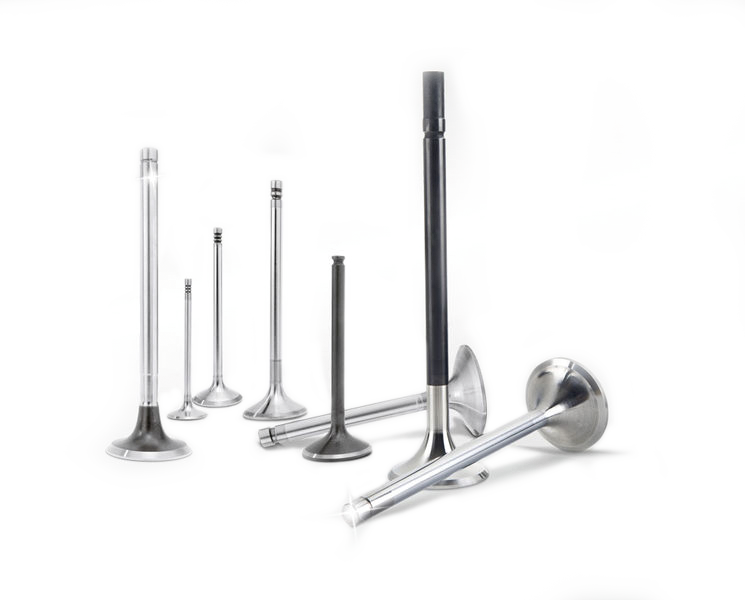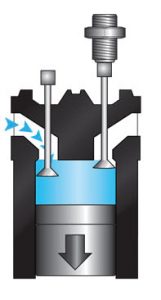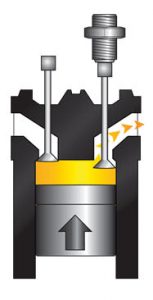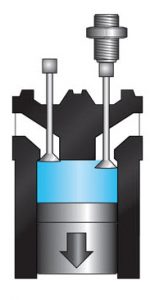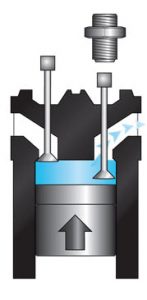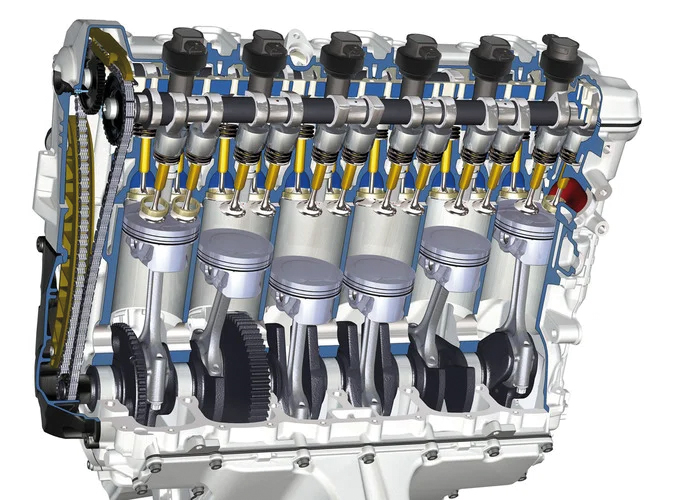
In this issue we will talk about intake and exhaust valves, however, before entering into specifics, we will contextualize these elements for a better understanding. An engine needs a means to distribute intake and exhaust gases, to control and move them through the collector to the intake manifold, combustion chamber and exhaust manifold. This is achieved through a series of mechanisms which form a system called distribution.
An internal combustion engine requires a fuel-air mixture that, when burned, moves the engine mechanisms. In the collector the air is filtered to be led to the intake manifold, where dosing of fuel mixture is done, through systems such as the carburetor or injection.
When ready, this mixture goes into the combustion chamber so that this gas is burned and thus transform thermal energy into mechanical one. After process is completed it is necessary that combustion gases leave the chamber and allow the cycle to repeat. To develop this process, the engine has to control gas inlet and outlet in each cylinder, this is accomplished through intake and exhaust valves that will be responsible for opening and closing the ducts at the desired times.
ENGINE CYCLES
The operation of the four-stroke engine is comprised of four stages, these are:

